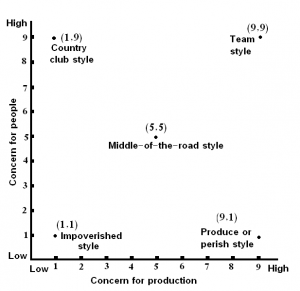What A Leader Needs Is Other Leaders – Analysis
By IESE Insight
Leadership is one of the most valued management skills, along with client relationships, honesty and initiative.
However, leadership has ceased to be thought of as a characteristic exclusive to senior management.
Instead, a new formula is being adopted in which leadership functions at all levels of the organization.
This is the view expressed by IESE Prof. Pablo Cardona and Carlos Rey of DPM Consulting. Their paper looks at how to create leadership throughout an organization, and they review the evolution of the idea of leadership itself.
The Leader/Leader Model
The new leadership paradigm proposes the coexistence of multiple leaders in the same environment but at different levels of the organization.
This implies abandoning the leader/follower concept in which the leader is “one” and “the rest” are merely followers.
The distribution of leadership throughout the organization breaks with this traditional model and instead aims to form communities of leaders along the chain of command.
This is the so-called leader/leader model, in which the leaders of an organization lead other leaders in a coordinated and positive manner.
This new model of leadership is a source of competitiveness that many of the best-run companies are already exploiting.
The Foundations of New Leadership

Sustainable leadership depends on two complementary factors: transformational will, combined with vision; and a spirit of service, linked to the mission.
When applying the leader/leader model in an organization, one has to take into account three fundamental characteristics.
1. Unity of Leadership. All of the leaders must draw their leadership from a common source.
A clear example of this is seen in sports teams, in which all the members share the goal of winning the game, while at the same time each exercises continuous and constant leadership over the others in order to achieve this end.
This leadership relationship, which is often referred to as “multiple influence,” has been a much studied phenomenon in the management field. In fact, a lot of effort has already gone into applying it in the day-to-day running of companies during recent decades.
2. Leadership Through Participation. This requires vertical connections between the so-called leader/chief, who is responsible for structuring the mission and vision, and the leader/collaborator, who drives both the mission and vision within the working environment.
This sort of leadership through participation can be seen when, for example, a boss asks others for feedback about errors or areas that could be improved.
3. Sustained Leadership. This takes place when the force of the leader doesn’t just come from within, but is maintained and strengthened through the leadership of other members of the organization.
In this manner, the leadership of some sustains and drives that of others, and multiplies it throughout the organization.
Lest we forget, many great leaders in history have relied on close associates – teachers, advisers, mentors – who have held considerable influence over them.
The Way of the Leader
The individual process that underlies the leader/leader model comprises three consecutive steps, which must be taken by the senior executives and then spread throughout the organizational pyramid.
1. Personal Commitment to the Mission and Vision. This encompasses both the affective aspects involving the emotions, and the normative aspects involving moral obligations.
2. Adapting Leadership Tools. This involves a broad range of tools, including strategic planning systems, control panels, budgets and performance assessment, which must be structurally redesigned in the service of the mission and vision.
3. Developing Leadership Among Coworkers. The model can only really change when the leader can make his or her coworkers leaders as well.
To achieve this, the leader/chief must make sure that coworkers also take these three steps at an individual level – that is to say, that they are completely committed, are sure that they’re using leadership tools correctly and are capable of transforming the people they are in charge of into leaders as well.
Ultimately, the ability to transmit leadership throughout an organization is probably the greatest source of organizational competitiveness this century.
The leader/leader model can give organizations an important plus in their ability to generate new and imaginative solutions to the company’s problems.
